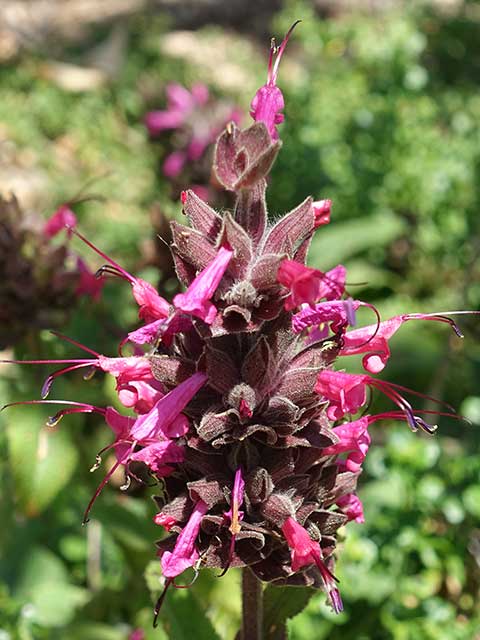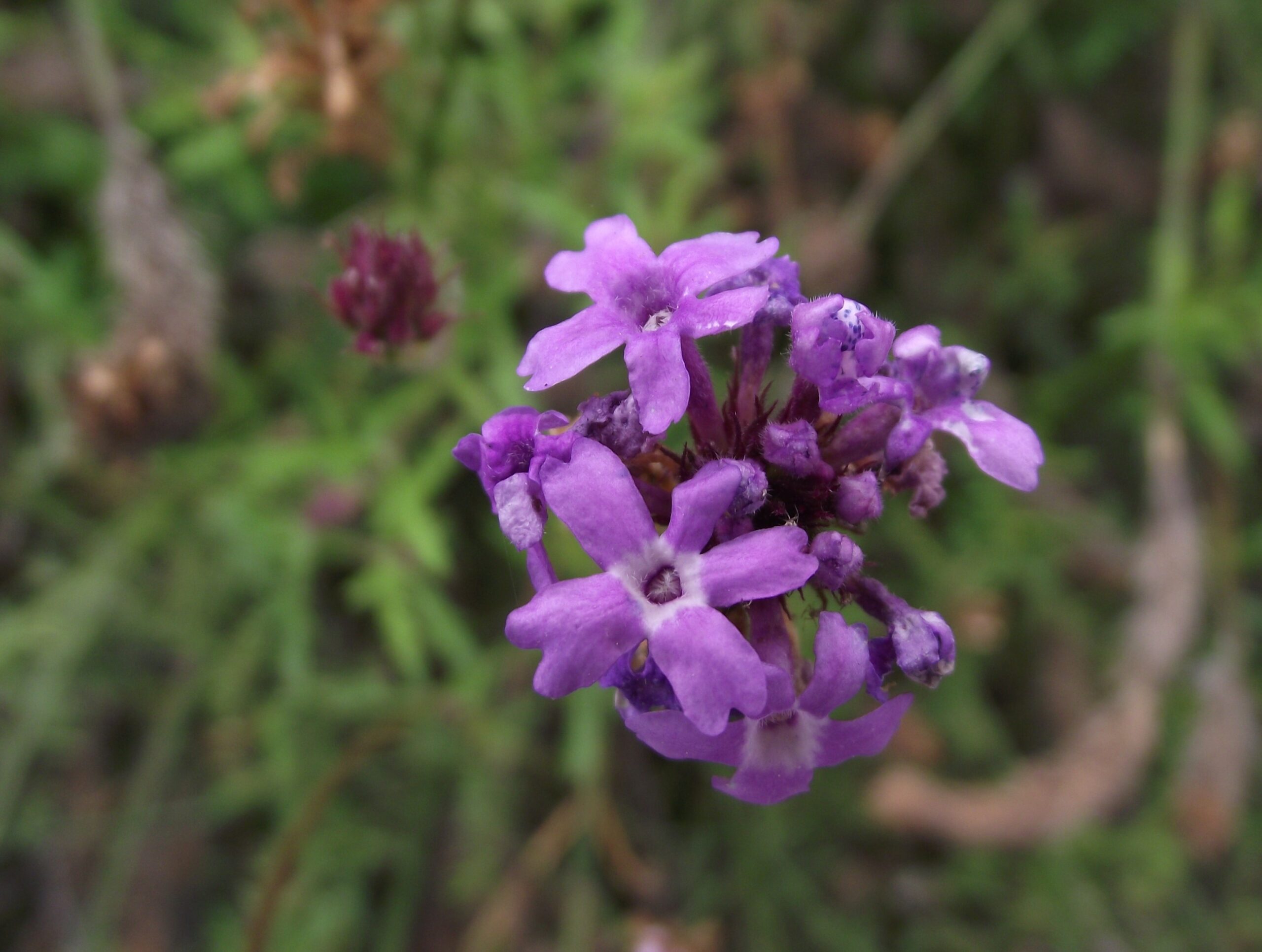By Jon Nord Kanagy
The passing of the recent heat wave, a harvest moon, and the approaching autumnal equinox all have us looking toward shorter, cooler days and additional fall rains. These conditions, coupled with soil that continues to hold some summer heat, combine to make the ideal time for planting California native plants in your landscape. Native plants are not only the best adapted to our climate, they also provide habitat for our native insects, birds, reptiles, and other wildlife.
La reciente ola de calor, la luna “de cosecha,” y la proximidad del equinoccio otoñal nos tienen esperando días frescos, cortos, y las lluvias del otoño. Estas condiciones, junto con suelo que continúa manteniéndose caluroso, se combinan para hacer el tiempo ideal para plantar plantas nativas Californianas en tu jardín o paisaje. Las plantas nativas no sólamente son las mejores adaptadas a nuestro clima, también proveen hábitat para nuestros insectos, pájaros, reptiles, y otra vida silvestre nativa.

Dutchman’s pipe (Aristolochia californica) (left) is the only host plant of the Pipevine Swallowtail Butterfly (Battus philenor) (right). Aristolochia californica (en inglés, “California Dutchman’s Pipe”), (izquierda), es la única planta hospedante de la mariposa cola de golondrina azul (Battus philenor) (derecha).
While those fall rains may still be a month or two away, now is the perfect time to plan for new additions to your garden, whether that means making a list and thinking about sources for desired plants, or preparing the garden site. For me, the planning process is one of the best parts of gardening and I’m excited that I’ve got a number of garden improvements in mind for this fall. I’ll continue the transition of my landscape toward mostly California natives by removing some non-native star jasmine from a low chain link fence, and replacing it with Dutchman’s pipe (Aristolochia californica), which I propagated from cuttings a few months ago. Dutchman’s pipe is the only host plant of the Pipevine Swallowtail Butterfly, which is frequently seen visiting the vines in our area. In another part of the garden, I’ll plant some hummingbird sage (Salvia spathacea). As the name implies, hummingbird sage flowers attract hummingbirds but also many bees and butterflies. The plant prefers some shade in inland sites. In my garden, I’m hoping it thrives in the dappled shade of a non-native pineapple guava.
Mientras esas lluvias tal vez lleguen uno o dos meses más tarde, ahora es el tiempo perfecto para planear adiciones nuevas al jardín, ya sea haciendo una lista y pensando acerca de recursos para plantas deseadas o preparar el sitio para el jardín. Para mí, el proceso de planeación es una de las mejores partes de la jardinería y estoy emocionado de tener un número de mejoras en mente para este otoño. Continuaré con la transición de mi paisaje a plantas nativas Californianas con remover jasmín (que no es nativo) de una cerca y reemplazandola con Aristolochia californica (en inglés, “California Dutchman’s Pipe”), la cual propagé de esquejes hace unos meses. “California Dutchman’s Pipe” es la única planta hospedante de la mariposa cola de golondrina azul (Battus philenor), la cual frecuentemente visita las parras en nuestra área. En otra parte del jardín, plantaré Salvia spathacea (en inglés, “California Hummingbird Sage”). Como el nombre lo implica, las flores atraen colibrís pero también muchas abejas y mariposas. La planta prefiere algo de sombra en áreas lejos de la costa. En mi jardín, espero que prospere en la sombra de un árbol piña-guayaba (que tampoco es nativo).

Hummingbird sage (Salvia spathacea)
Salvia spathacea (en inglés, “California Hummingbird Sage”)
As I visit native plant nurseries and plant sales of the California Native Plant Society this fall, I’ll be on the lookout for candidates to live as patio pot plants that will replace some of my non-native aloes and jade plants. I’m thinking that wooly sunflower (Eriophyllum lanatum) will work well, and I’ll likely pick up a Verbena lilacina ‘De La Mina,’ which hails from Baja California. While not technically a native, this cultivar has some great qualities for the California garden. It boasts a long bloom season with purple flowers that are very attractive to butterflies. It is considered the perfect near-native replacement for lavender. I already enjoy a new potted ‘Vandenberg’ manzanita which is developing some real sculptural beauty at a young age and I look forward to the manzanita growing old and handsome on the patio. This plant actually spent one year out in the landscape, but I decided to give that space over to an interesting and large growing native buckwheat, Eriogonum giganteum.
Conforme visito viveros de plantas nativas y ventas de plantas de California Native Plant Society este otoño, buscaré candidatos que puedan vivir como plantas en macetas para reemplazar algunos de mis no nativos áloes y plantas de jade. Pienso que Eriophyllum lanatum (en inglés, “Wooly sunflower”) servirá para este propósito, y probablemente recogeré una Verbena De La Mina (Verbena lilacina) la cual proviene de Baja California. Técnicamente, este cultivo no es nativo pero aporta grandes cualidades para el jardín Californiano. Tiene una temporada de flor larga con flores moradas que son muy atractivas para las mariposas. Es considerada el reemplazo casi-nativo perfecto para lavanda. Ya disfruto de una manzanita ‘Vandenberg’ en una maceta, la cual realmente está desarrollando belleza escultural a temprana edad y espero que esta manzanita crezca en edad y belleza. Esta planta pasó un año plantada en el paisaje pero decidí darle ese espacio a una grande e interesante especie nativa de Eriogonum giganteum (en inglés, “Buckwheat”).

‘Vandenberg’ manzanita and Wooly sunflower (Eriophyllum lanatum ‘Siskiyou’)
Manzanita ‘Vanderberg’ y variedad Siskiyou de Eriogonum giganteum (en inglés, “Buckwheat”).
If you’re looking to buy California native plants for your garden, save the date for our upcoming Fall Native Plant Sale at the Native Plant Nursery on October 15 and 16 from 9:00 am-12:00 pm. The nursery is located at Sonoma Garden Park, 19996 7th St. E in Sonoma. See you there!
Si buscas comprar plantas nativas Californianas para tu jardín, te recordamos que nuestra próxima venta de plantas nativas será el 15 y 16 de octubre de las 9:00am-12:00pm en el vivero de plantas nativas. El vivero se ubica en Sonoma Garden Park, 19996 7th St. E en Sonoma. ¡Ahí nos vemos!

Verbena lilacina ‘De La Mina’
Verbena De La Mina (Verbena lilacina)
Learn more and download Resilient Landscaping Coalition Guide to Sustainable Defensible Space here!
If you need help with native plants garden planning, Sonoma Ecology Center offers landscape design as a fee-for-service program. Our firewise designs apply habitat and water conservation principles, using native plants, customized to your property, to reach sustainability goals. Contact Design and Implementation Project Manager Jon Nord Kanagy at jonk@sonomaecologycenter.org for more information.
Si necesitas ayuda con tus planes de jardinería con plantas nativas, Sonoma Ecology Center ofrece diseño de paisaje como un servicio de programa. Nuestros diseños resistentes al fuego aplican principios de conservación de agua y hábitat, utilizando plantas nativas, personalizado a tu propiedad, para alcanzar objetivos de sustentabilidad. Comunícate con el Gerente de proyectos de diseño e implementación, Jon Nord Kanagy en jonk@sonomaecologycenter.org para más información.
